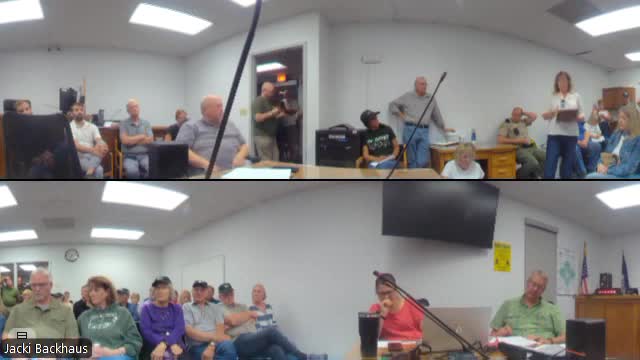Public Concerns Emerge Over Wind Ordinance's Impact on Resident Protections
August 28, 2025 | Worth County, Iowa
This article was created by AI summarizing key points discussed. AI makes mistakes, so for full details and context, please refer to the video of the full meeting. Please report any errors so we can fix them. Report an error »

In the dimly lit conference room of the Worth County Board of Supervisors, a palpable tension filled the air as community members gathered to voice their concerns over a proposed wind turbine project. The meeting, held on August 27, 2025, became a platform for residents to express their apprehensions about the implications of the project on their land and livelihoods.
One of the most pressing issues raised was the potential impact of turbine placement on local residents. A speaker questioned the criteria for determining what constitutes "reasonable" movement of turbine locations, emphasizing the need for clarity in the contract. This concern was echoed by others who highlighted the long-term effects of construction on drainage systems, noting that damage might not be immediately visible and could take years to manifest due to changing weather patterns.
The discussion took a more serious turn as residents pointed out perceived inequalities in the proposed wind ordinance. They argued that certain sections of the agreement unfairly discriminated against specific groups based on their geographic location, subjecting them to lower safety protections. This sparked a debate about the fairness of the regulations, with calls for equal treatment and enhanced safety measures for all citizens.
Further complicating the conversation were concerns about the accuracy of maps used to determine safety boundaries. Residents urged the board to rely on current data from the Iowa Department of Natural Resources rather than outdated contractor maps, stressing the importance of using reliable information to safeguard their community.
As the meeting progressed, speakers also addressed the need for clear guidelines regarding sound levels emitted by the turbines. They pointed out that while the contract mentioned sound modeling, it lacked enforceable measures to ensure that actual sound levels would remain within acceptable limits once the turbines were operational.
The issue of removal costs and salvage value for the turbines was another focal point, with residents advocating for third-party assessments to avoid conflicts of interest in determining these figures.
As the meeting drew to a close, it was evident that the community's concerns were far from resolved. The discussions highlighted a deep-seated desire for transparency, fairness, and accountability in the face of significant changes to their landscape. With the future of the wind project hanging in the balance, residents left the meeting with a renewed commitment to advocate for their rights and ensure that their voices were heard in the decision-making process.
One of the most pressing issues raised was the potential impact of turbine placement on local residents. A speaker questioned the criteria for determining what constitutes "reasonable" movement of turbine locations, emphasizing the need for clarity in the contract. This concern was echoed by others who highlighted the long-term effects of construction on drainage systems, noting that damage might not be immediately visible and could take years to manifest due to changing weather patterns.
The discussion took a more serious turn as residents pointed out perceived inequalities in the proposed wind ordinance. They argued that certain sections of the agreement unfairly discriminated against specific groups based on their geographic location, subjecting them to lower safety protections. This sparked a debate about the fairness of the regulations, with calls for equal treatment and enhanced safety measures for all citizens.
Further complicating the conversation were concerns about the accuracy of maps used to determine safety boundaries. Residents urged the board to rely on current data from the Iowa Department of Natural Resources rather than outdated contractor maps, stressing the importance of using reliable information to safeguard their community.
As the meeting progressed, speakers also addressed the need for clear guidelines regarding sound levels emitted by the turbines. They pointed out that while the contract mentioned sound modeling, it lacked enforceable measures to ensure that actual sound levels would remain within acceptable limits once the turbines were operational.
The issue of removal costs and salvage value for the turbines was another focal point, with residents advocating for third-party assessments to avoid conflicts of interest in determining these figures.
As the meeting drew to a close, it was evident that the community's concerns were far from resolved. The discussions highlighted a deep-seated desire for transparency, fairness, and accountability in the face of significant changes to their landscape. With the future of the wind project hanging in the balance, residents left the meeting with a renewed commitment to advocate for their rights and ensure that their voices were heard in the decision-making process.
View full meeting
This article is based on a recent meeting—watch the full video and explore the complete transcript for deeper insights into the discussion.
View full meeting
